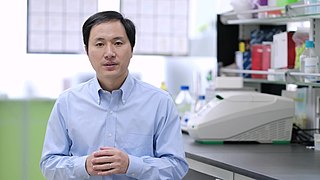Chinese government funding may have been used for ‘CRISPR babies’ project, documents suggest
By Jane Qiu,
STAT
| 02. 25. 2019
BEIJING — Three government institutions in China, including the nation’s science ministry, may have funded the “CRISPR babies” study that led to the birth last November of two genetically modified twin girls, according to documents reviewed by STAT.
These findings appear to support what many researchers inside and outside China have suspected since scientist He Jiankui revealed the births in late November, sparking international condemnation for violating scientific guidelines against the use of gene-edited human embryos to start pregnancies. “I don’t think He Jiankui could have done it without the government encouragement to press ahead” with research they thought would merit a Nobel Prize, said Jing-Bao Nie, a bioethicist at the University of Otago in New Zealand.
If the documents are correct, they would suggest China is supporting research that the U.S. and other countries consider unethical, and raise doubts about the preliminary conclusion of a government investigation that He acted mostly on his own. That inquiry, which was led by the Guangdong provincial health commission and involved the science ministry and the National Health Commission, determined that He raised funding...
Related Articles
By Jenny Lange, BioNews | 12.01.2025
A UK toddler with a rare genetic condition was the first person to receive a new gene therapy that appears to halt disease progression.
Oliver, now three years old, has Hunter syndrome, an inherited genetic disorder that leads to physical...
By Rachel Hall, The Guardian | 11.20.2025
Couples are needlessly going through IVF because male infertility is under-researched, with the NHS too often failing to diagnose treatable causes, leading experts have said.
Poor understanding among GPs and a lack of specialists and NHS testing means male infertility...
By Pam Belluck and Carl Zimmer, The New York Times | 11.19.2025
Gene-editing therapies offer great hope for treating rare diseases, but they face big hurdles: the tremendous time and resources involved in devising a treatment that might only apply to a small number of patients.
A study published on Wednesday...
By Aisha Down, The Guardian | 11.10.2025
It has been an excellent year for neurotech, if you ignore the people funding it. In August, a tiny brain implant successfully decoded the inner speech of paralysis patients. In October, an eye implant restored sight to patients who had...




